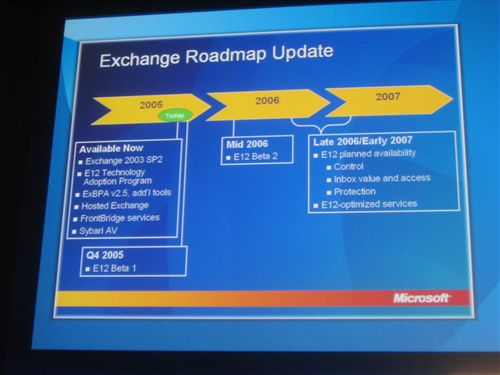The Windows Server 2003 R2 Administration Tools Pack provides server management tools that allow administrators to remotely manage computers running the Windows Server 2003 R2 family of operating systems. These packages contain management consoles for Print Management, File Server Resource Manager, Distributed File System, and Identity Management for Unix. Additionally, the Print Management tool enables remote administration of computers running the Windows 2000, Windows XP, and Windows Server 2003 family of operating systems. These management consoles are supplemental to the tools included in the Windows Server 2003 Service Pack 1 Administration Tools Pack.
Category: windows
About windows
Windows Memory Diagnostic
The Windows Memory Diagnostic tests the Random Access Memory (RAM) on your computer for errors. The diagnostic includes a comprehensive set of memory tests. If you are experiencing problems while running Windows, you can use the diagnostic to determine whether the problems are caused by failing hardware, such as RAM or the memory system of your motherboard. Windows Memory Diagnostic is designed to be easy and fast. On most configurations, you can download the diagnostic, read the documentation, run the test and complete the first test pass in less than 30 minutes.
AdvancedRemoteInfo
Mit diesem Tool können Sie sich ausführliche Informationen über (Windows-)PCs in ihrem lokalen Netzwerk anzeigen lassen.
Ausserdem können Sie Nachrichten verschicken, Prozesse starten und beenden, Services starten und stoppen und Rechner herunterfahren.
… und das funktioniert tatsächlich perfekt – unglaublich, was das kleine tool alles – admin rechte vorrausgesetzt – aus den pcs auslesen kann. ebenfalls praktisch ist die funktion gleich ganze netze zu scannen. auf der todo liste steht momentan noch die softwareverteilung; spätestens wenn auch das noch integriert ist, sollte es in keiner toolsammlung fehlen – in meiner ist es bereits jetzt schon und ich möchte es nicht mehr missen
ready2005
dieses fenster ist aktiv…
ja und?
The Microsoft Product Licensing Advisor (MPLA)
The Microsoft Product Licensing Advisor (MPLA) is an easy-to-use online tool that helps you find and select Microsoft products, find the right Volume Licensing program, and determine estimated retail pricing (ERP) based on your software needs.
The Product Licensing Advisor:
– Provides Volume Licensing program comparisons and guidance.
– Simplifies Microsoft product selection through a series of questions.
– Produces a downloadable report and estimated retail price (ERP) quote in Microsoft Word or Excel.
– Saves time and costs associated with software acquisition.
Exchange 12 nicht ohne neue hardware
eben bei eileen brown gefunden:
Exchange 12 (E12) will only be made available in 64 bit. Yes, I said only…..
teurer spaß würd ich sagen – der umstieg der kunden wird wohl dementsprechend lange dauern wenn man die heutigen it budgets bedenkt; und es gibt ja sogar immer noch genug exchange 5.5 installationen…
btw: hier eine roadmap, es dauert noch gut ein jahr bis wir mit exchange 12 beglückt werden

(roadmap via bink.nu)
Das Menu Extension Construction Kit
wenn man die kontextmenüs in windows um eigene befehle erweitern möchte, so muss man in der registry herumpfuschen – oder man erledigt das elegant über eine gui mittels dem menu extension construction kit – freeware und sollte in keiner toolsammlung fehlen
msi2xml und zurück
schön öfters wollte ich einzelne dateien aus msi paketen extrahieren oder diese gegen andere austauschen – das geht perfekt einfach mit den beiden tools MSI2XML / XML2MSI; man kann msi bzw msm pakete zu xml files konvertieren, verändern und danach wieder zu einem msi paket zusammenpacken. die tools sind open source und sollten keinem admin fehlen
Junction- & Hard- Links
unter unix ist es nichts besonderes, verzeichnisse oder dateien zu “verlinken”, d.h. irgendwo anders auf dem system als – nennen wir es – virtuellen folder oder file zur verfügung zu stellen. anders als bei stinknormalen shortcuts sind diese folder und files dann von allen applikationen transparent zu verwenden.
mit boardmitteln von windows selbst kann man nur eine ganze platte auf irgendeinem anderen ntfs volume unter einem verzeichnis mounten – aber nur nur einen folder oder gar nur ein einzelnes file nicht… obwohl das ntfs ab version 5 durchaus unterstützen würde.
daher braucht man dazu zwei tools:
Junction Link Magic: mit diesem tool kann man einfach über eine gui links von z.b. c:\folder1 auf d:\folder2 setzen; d.h. z.b. im explorer sieht man dann unter d:\folder2 exakt das, was in c:\folder1 enthalten ist
NTFS Hardlink ShellExtension: dieses tool bietet eine sehr schöne integration in den explorer; man kann damit gleiches wie mit obigen tool anstellen, nur eben nicht auf folder, sondern auf file-basis